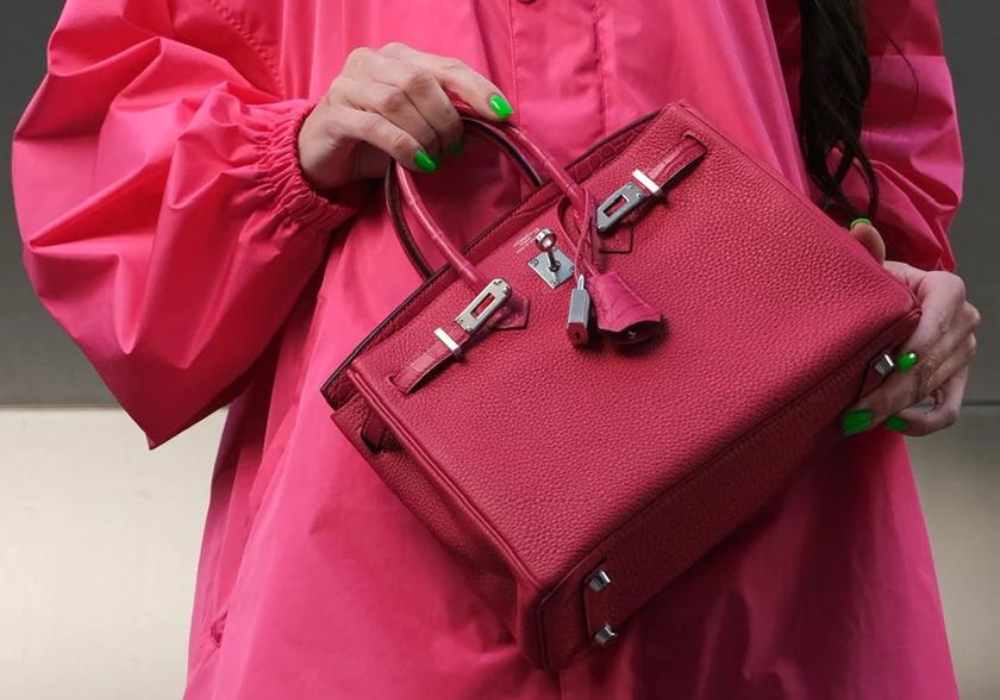A Complete History of the Hermès Birkin


A Complete History of the Hermès Birkin
If one bag anchors the entire secondary market, it’s the Hermès Birkin. Its now‑mythic origin traces to a 1983 flight from Paris to London, where Jean‑Louis Dumas sketched a new weekend bag for Jane Birkin on an airsickness bag—adapting the closure of the tall Haut à Courroies (HAC). The prototype arrived in 1984: a 35cm Black Box Calf with Gold hardware and rare shoulder‑strap attachments. Even Ms. Birkin reportedly paid for it—tradition for celebrities ever since.
Related: Birkin 35 Vibrato (2001)

Jane Birkin’s Relationship with the Bag
Jane Birkin’s attitude remained charmingly nonchalant: she questioned owning more than one, later favoring a Kelly because the Birkin felt heavy. She famously wore Birkins hard, auctioned them for charity at eye‑popping prices, then bought anew. She reportedly received an annual fee for name use and access to fresh Birkins—often “breaking in” a bag by tossing it on the floor on live TV.

From HAC to Global Phenomenon
The Birkin’s closure derives directly from the HAC’s saddle‑carry design, resized for daily life. The 35cm and 40cm Birkins launched to instant waitlists. Leïla Menchari’s Paris windows amplified desire, while materials and colors expanded rapidly, including the most coveted exotics.

1990s Evolution: Togo, Palladium & the 30
In the mid‑1990s Hermès introduced meaningful updates: Togo leather, Palladium hardware, refined Kelly strap clips, and—most notably—the Birkin 30 in 1996. Prior to that, smaller sizes were largely special orders; the 30 became the day‑to‑day sweet spot and the smallest standard Birkin for nearly a decade.

2004 Miniature: The Birkin 25
Under Jean‑Paul Gaultier, Hermès miniaturized the icon. The Birkin 25 arrived in 2004, initially overshadowed by the 30 and classic 35. Around 2015, global style shifted smaller—catapulting the 25 to dominance across leathers and colors.

Limited Editions: Candy to So Black (and Beyond)
Post‑Gaultier, Hermès leaned into seasonal creativity. From 2011’s Candy (the only mini 15cm Birkins) and So Black, to multi‑tone Arlequin and Éclat, to technique‑driven Lettre and Tressage, limited editions surged. Popularity often peaks on release, dips for a few years, then rebounds as pristine examples grow scarce.

Oddities & the First Sellier Birkin
Hermès also experimented with unusual formats: travel 45/50, elongated handles, slim Birkins at half depth, Cabas, Dépêches, Ados, and the embossed‑illusion Shadow. In 2014, the first Sellier Birkin 40 appeared in Vache Hunter—unlined with a zip pouch—foreshadowing a new construction era.

Special Orders: The Collector Apex
The most coveted Birkins are Special Orders—multi‑color client‑configured pieces marked with the horseshoe (post‑2006). Hermès curates eligible leathers, sizes, hardware, and color counts each season. Tri‑color options have narrowed; custom exotics are tightly controlled. At the highest tier, clients have commissioned embroidery, fur panels, beading, fringe, and more. When these bags appear, they rival Himalayans in value.
The Sellier Era & What’s Next
After the 2014 Sellier 40, Hermès refined and expanded Sellier construction. Sellier Birkin 25 and 30 have begun circulating globally in select colors and materials with fully finished interiors. A hyper‑limited 20cm Sellier referencing the Faubourg flagship façade marked the shift. Expect Sellier to define the next decade of Birkin evolution.


Birkin — Frequently Asked Questions
When was the Birkin created?
The Birkin was conceived in 1983 and first delivered in 1984 to Jane Birkin—a 35cm Black Box Calf with Gold hardware.
What sizes did Hermès introduce over time?
The originals were 35 and 40. The 30 arrived in 1996; the 25 debuted in 2004. In 2014 a 40cm Sellier appeared; today Sellier 25 and 30 are in limited circulation.
What are notable limited editions?
Candy, So Black, Arlequin, Éclat, Club, Flag, Ghillies, Lettre, Tressage—and ultra‑rare experimental formats like Shadow.
What makes Special Orders so valuable?
Client‑configured colors/leathers (post‑2006 horseshoe stamp), seasonal constraints, and VIP‑level executions make them scarce; top pieces can rival Himalayans.
What defines Sellier vs. Retourne in Birkins?
Sellier features exterior stitching and crisp edges for a structured profile; Retourne has turned‑in edges for a softer, more relaxed silhouette.
Hermès Birkin — Milestones Timeline
Origin Story & First Delivery
Jean‑Louis Dumas sketches a weekend bag for Jane Birkin (1983). First Birkin delivered in 1984: 35cm Black Box Calf, Gold hardware, with early shoulder‑strap fittings.
Global Demand & Window Fame
Instant waitlists worldwide; Leïla Menchari’s Paris windows cement the Birkin as a cultural symbol. Materials and color range expand rapidly.
Togo, Palladium & the Birkin 30
Togo leather and palladium hardware modernize the icon. In 1996, the 30cm arrives—becoming the everyday sweet spot and the smallest standard size for nearly a decade.
Birkin 25 Debuts
Under Jean‑Paul Gaultier, the 25cm launches. Initially niche, it surges a decade later as small‑bag trends accelerate globally.
Limited Editions Era
Collections like Candy and So Black ignite seasonal creativity; multi‑tone Arlequin/Éclat and technique‑driven Ghillies, Lettre, Tressage fuel collector demand.
First Sellier Birkin (40)
Unlined Vache Hunter Sellier 40 with zip pouch previews a structural, crisp‑edged chapter for the Birkin line.
Small‑Bag Shift
Fashion pivots compact; the Birkin 25 becomes a market leader across key regions and leathers.
Sellier 25/30 & Faubourg 20
Structured Sellier Birkins in 25 and 30 circulate in select colors/materials. A hyper‑limited 20cm Sellier pays homage to the Faubourg flagship—signaling the next decade of design.



Leave a comment
This site is protected by hCaptcha and the hCaptcha Privacy Policy and Terms of Service apply.